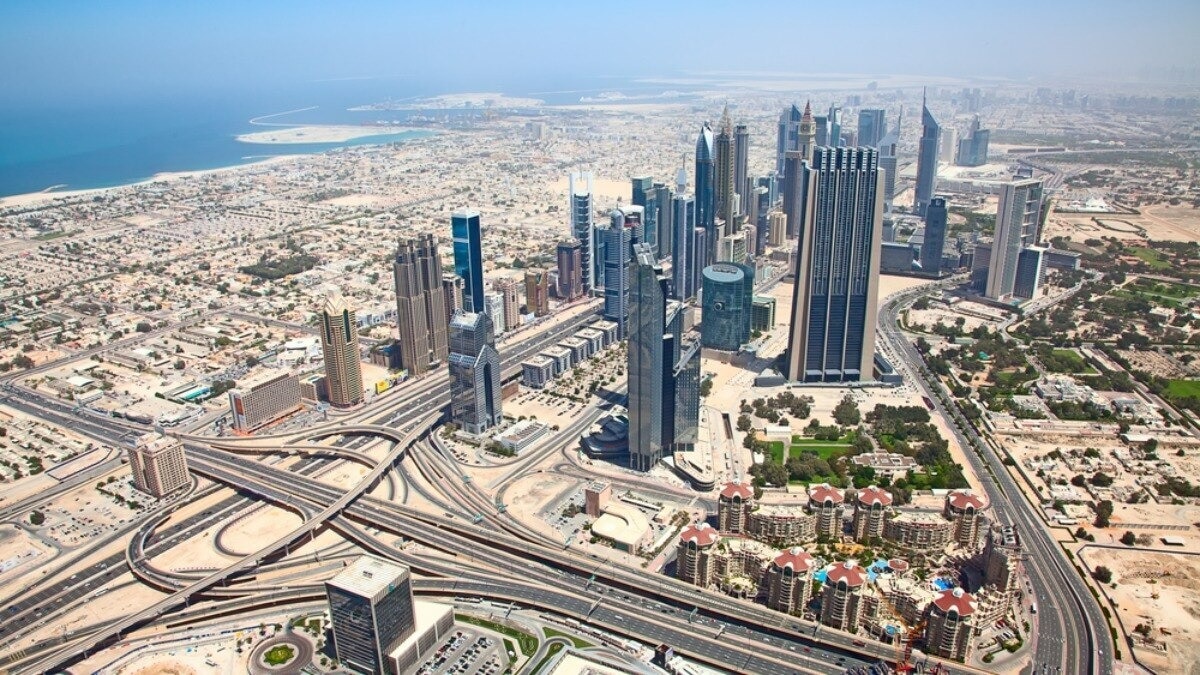It’s remarkable to see how the country’s GCCs have matured over the past two decades. What started in the early 2000s as low-cost back-office shops handling basic IT and transaction processing has quietly evolved into full-blown centres of excellence. At present, there are more than 1,800 global capability centres (GCC) in India. In an interaction with Business Today, Rohan Lobo, Partner at Deloitte India, stated that big brands are establishing end-to-end innovation hubs in the country, and this trend is likely to continue. He further said that India’s GCCs are poised to be the world’s go-to innovation partners. Lobo further shared his views on the smaller cities which are emerging as favourites for GCCs. Edited excerpts:
BT: How have GCCs in the country transformed in the past two decades?
Lobo: The numbers tell the story: we’ve gone from roughly 500 centres back in the late 2000s to over 1,800 today, employing more than 2.1 million professionals and a gross value add of nearly $68 billion. GCCs now span industries beyond IT and banking—healthcare, automotive, consumer goods and more—and they’re driving digital transformation, advanced analytics, product engineering, even core R&D for their parent companies.
What’s especially exciting is how the footprint has spread. Once the preserve of Bangalore, Hyderabad and Pune, GCCs are now popping up in tier‑2 and tier‑3 cities, tapping new pools of talent and helping smaller communities join India’s knowledge‑economy boom.
It’s a win‑win: lower costs for companies, fresh career paths for local professionals, and a much broader, more resilient ecosystem for all of us.
Looking ahead, I don’t see this slowing down. PE‑backed companies are targeting niche, high‑growth areas. Nearly a third of the companies establishing GCCs are mid-market (revenue of $100 million to $1Billion).
BT: GCCs in India are now handling complex mandates in areas such as artificial intelligence, cybersecurity and health-tech. What does it signal about India’s capabilities on the global stage?
Lobo: India’s GCCs have steadily evolved from back-office support arms into strategic innovation hubs, with a growing share of global mandates in areas such as artificial intelligence (including generative and agent-based AI), digital engineering, advanced R&D, cybersecurity, and industry domains like health-tech. This transition is increasingly reflected in real-world deployments. For instance, several global banks and financial institutions have established AI and machine learning research units across key locations in India, where teams work on building predictive fraud-detection models, credit-scoring algorithms, and conversational AI systems that are now integrated across enterprise-wide platforms. In the cybersecurity domain, multinational consumer goods firms have operationalised round-the-clock Security Operations Centres (SOCs) from India, with reported reductions in incident response time and measurable improvements in threat intelligence capabilities. Similarly, GCCs in regulated sectors such as life sciences and med-tech have begun contributing to digital biomarker development, clinical analytics, and AI-enabled health diagnostics that support global R&D pipelines.
Taken together, these developments point to India’s rising credibility in not just executing complex technology tasks, but also in designing, scaling, and governing them for global use. The breadth of domain expertise, access to highly skilled engineering talent, and ongoing investment in AI/ML, cloud platforms, and cybersecurity capabilities have positioned India’s GCC ecosystem as a central pillar of enterprise innovation strategy.
BT: How do you see the growth of GCCs in India going ahead? How may they further boost the economy?
Lobo: I expect India’s GCC footprint to keep accelerating, crossing 5,000 centres by 2030, and directly employing 4-5 million people. This next wave of growth will ripple through the wider economy – new centres in tier‑2 and tier‑3 cities will spark real estate, logistics and professional‑services booms, while foreign investment tied to GCC expansion will top up India’s forex reserves and fuel infrastructure projects.
BT: Beyond cost, what makes Indian talent uniquely positioned to lead global innovation?
Lobo: What sets Indian talent apart is the sheer scale and depth of its technical expertise—every year, over 1.5 million STEM graduates pour out of our colleges, with IITs and IIMs churning out engineers and problem‑solvers who have already cut their teeth on global projects. We are second only to the US in AI professionals and our teams don’t just code to spec—they apply a “controlled-jugaad” mindset, crafting frugal, high‑impact solutions when resources are tight. Throw in continuous upskilling—backed by initiatives like Skill India and Digital India—and you’ve got a workforce that masters emerging tech in record time.
On top of that, India’s collaborative culture and vibrant digital ecosystem give our people an unmatched edge. Whether it’s the 2,000‑plus AI startups crowding incubators in Bengaluru and Hyderabad or the hundreds of research partnerships between GCCs and top universities, everyone’s constantly exchanging ideas. Our professionals are equally at home leading a matrixed, cross‑border team or building an end‑to‑end product roadmap—so global corporations not only tap us for execution but lean on us to steer their innovation agendas. That blend of scale, agility, and entrepreneurial energy is exactly why Indian talent is redefining what’s possible on the world stage. Another key factor is the increasing number of India-origin CXOs who have a greater familiarity with the potential of India.
BT: How is India cementing its position as the top GCC destination? What advantages does India offer today compared with other major countries?
Lobo: India’s rise as the premier destination for Global Capability Centres (GCCs) is not incidental. It reflects a decades-long buildup of deliberate policy support and a maturing digital ecosystem.
At the national level, initiatives such as Skill India and Digital India have significantly advanced workforce readiness and digital infrastructure.
At the state level, multiple governments have launched tailored GCC policies. Collectively, these measures form a compelling support architecture that compares favourably with most global GCC destinations.
Combined with cost-effective delivery models, English-language fluency, and time-zone alignment, these factors enable India-based GCCs to support global transformation mandates with speed, innovation, and agility—capabilities that continue to reinforce its leadership on the world stage.
BT: Looking ahead to 2047, what role do you see India-based GCCs playing in the global enterprise landscape?
Lobo: Many multinationals already treat their India hubs as “second headquarters,” entrusting them with end-to-end product development, AI and cybersecurity mandates, and next-gen platform modernisation. Over the next two decades, these centres will routinely generate their own patents, digital platforms and enterprise-wide strategies—effectively becoming the R&D and innovation HQ for a whole new wave of companies launching groundbreaking products and reimagining how solutions and services are delivered.
BT: Are India’s Tier 2 and Tier 3 cities ready to support the next phase of GCCs growth?
Lobo: Think of GCC growth in Tier 2 and Tier 3 India as a classic J‑curve: there’s an initial phase of infrastructure build‑out—strengthening digital backbone, skilling workforces, and upgrading office parks—followed by a rapid uptick once critical mass is reached. Cities that get past the “valley of investment” are the ones where GCCs suddenly multiply, talent clusters form, and the ecosystem really takes off.
A key factor tipping the scale is proximity to internationally connected airports and efficient inter‑city links. Ultimately, these emerging hubs need a holistic push—digital and transport infrastructure, quality office and residential space, plus streamlined approvals—to fully ride that J‑curve. When you combine all those elements, cities with the right runway transform into self‑sustaining innovation clusters almost overnight, proving they are more than ready for the next wave of GCC growth.
BT: Which smaller cities do you think are emerging as favourites for GCCs? Why?
Lobo: India’s GCC landscape is rapidly decentralising, driven by aggressive state‑level policies that combine plug‑and‑play infrastructure, capex subsidies and streamlined approvals. In the north, Noida’s world‑class office parks—just a stone’s throw from Delhi and the upcoming Jewar airport—make it a natural choice for tech and analytics centres. Lucknow is building its own draw with new tech universities and Uttar Pradesh’s generous incentives, while Jaipur’s modern airport, affordable living costs and rent subsidies are turning it into a finance and retail customer‑experience hub. Chandigarh and Indore round out the region with high quality of life, skilled workforces and premier local institutions feeding a steady talent pipeline.
In western India, Ahmedabad and Vadodara leverage Gujarat’s upgraded airports, high‑speed rail plans and manufacturing prowess to attract fintech, semiconductor and analytics GCCs—with GIFT City serving as a financial‑services SEZ magnet. Nearby Nashik benefits from proximity to Mumbai plus a growing agritech and industrial‑analytics ecosystem, while Nagpur’s central location and multimodal connectivity position it as a logistics and cloud‑services anchor. Each city offers lower real‑estate and salary costs, less attrition than metros, and sectoral strengths that let GCCs tap specialised skills without the usual urban premiums.
Down south and along the coast, cities like Mysore and Coimbatore appeal to digitally native centres thanks to quality lifestyles, affordable real estate and seamless links back to Bangalore’s talent pool. Mangalore’s engineering colleges, strong ties to the banking sector, port‑city vibe and robust road, air and sea connectivity give it an edge in Fintech, IoT, logistics and maritime‑tech GCCs, while Kochi—backed by Technopark and state land grants—hosts R&D, semiconductor research and business‑process operations. Thiruvananthapuram is carving out a niche in advanced R&D, particularly in semiconductors and deep‑tech, under Kerala’s progressive policies.
On the east coast, Visakhapatnam’s deep‑water port, state‑backed IT parks and land grants make it a rising star for analytics and fintech GCCs, and Bhubaneswar’s fast‑improving infrastructure and focused incentives are drawing both domestic and global players. Kolkata, with its legacy of engineering excellence, is seeing renewed interest in industrial‑digital and healthcare‑tech mandates. Even Tier 4 and smaller Tier 3 towns—places like Gangtok, Kapurthala and Bhubaneswar’s suburbs—are popping up on GCC roadmaps as digital infrastructure improves and governments target skilling and sectoral clusters. Together, these emerging hubs form a multi‑nodal backbone that will sustain India’s next wave of GCC‑driven growth





